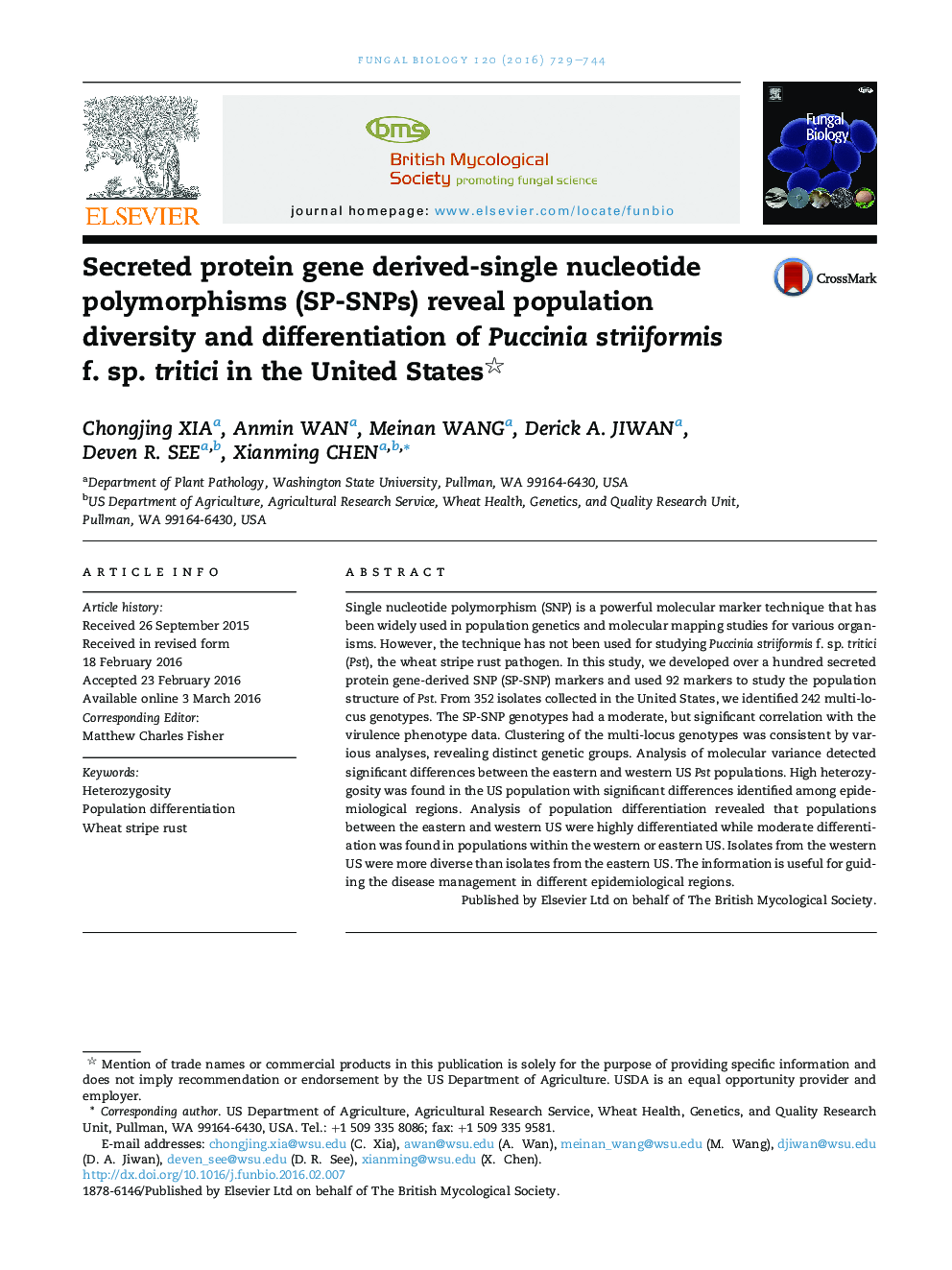| کد مقاله | کد نشریه | سال انتشار | مقاله انگلیسی | نسخه تمام متن |
|---|---|---|---|---|
| 6287823 | 1299993 | 2016 | 16 صفحه PDF | دانلود رایگان |

- We developed the first set of SNP markers of Puccinia striiformis f. sp. tritici based on secreted protein genes.
- We detected significant differences between the eastern and western US P. striiformis f. sp. tritici populations.
- We identified high heterozygosity in the pathogen populations with significant differences among epidemiological regions.
- We demonstrated the usefulness of SNPs in studying population genetics of wheat stripe rust fungi.
Single nucleotide polymorphism (SNP) is a powerful molecular marker technique that has been widely used in population genetics and molecular mapping studies for various organisms. However, the technique has not been used for studying Puccinia striiformis f. sp. tritici (Pst), the wheat stripe rust pathogen. In this study, we developed over a hundred secreted protein gene-derived SNP (SP-SNP) markers and used 92 markers to study the population structure of Pst. From 352 isolates collected in the United States, we identified 242 multi-locus genotypes. The SP-SNP genotypes had a moderate, but significant correlation with the virulence phenotype data. Clustering of the multi-locus genotypes was consistent by various analyses, revealing distinct genetic groups. Analysis of molecular variance detected significant differences between the eastern and western US Pst populations. High heterozygosity was found in the US population with significant differences identified among epidemiological regions. Analysis of population differentiation revealed that populations between the eastern and western US were highly differentiated while moderate differentiation was found in populations within the western or eastern US. Isolates from the western US were more diverse than isolates from the eastern US. The information is useful for guiding the disease management in different epidemiological regions.
Journal: Fungal Biology - Volume 120, Issue 5, May 2016, Pages 729-744